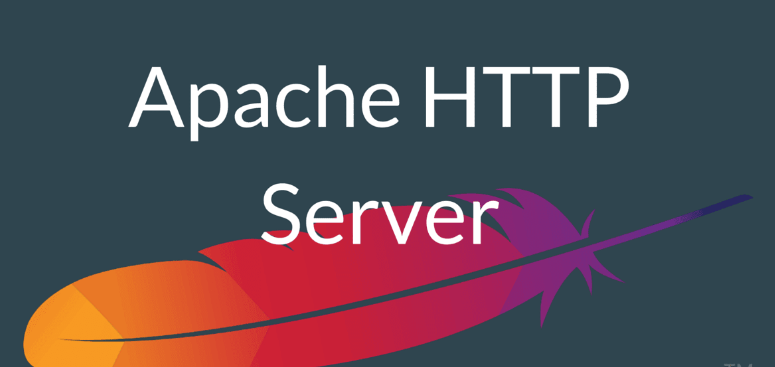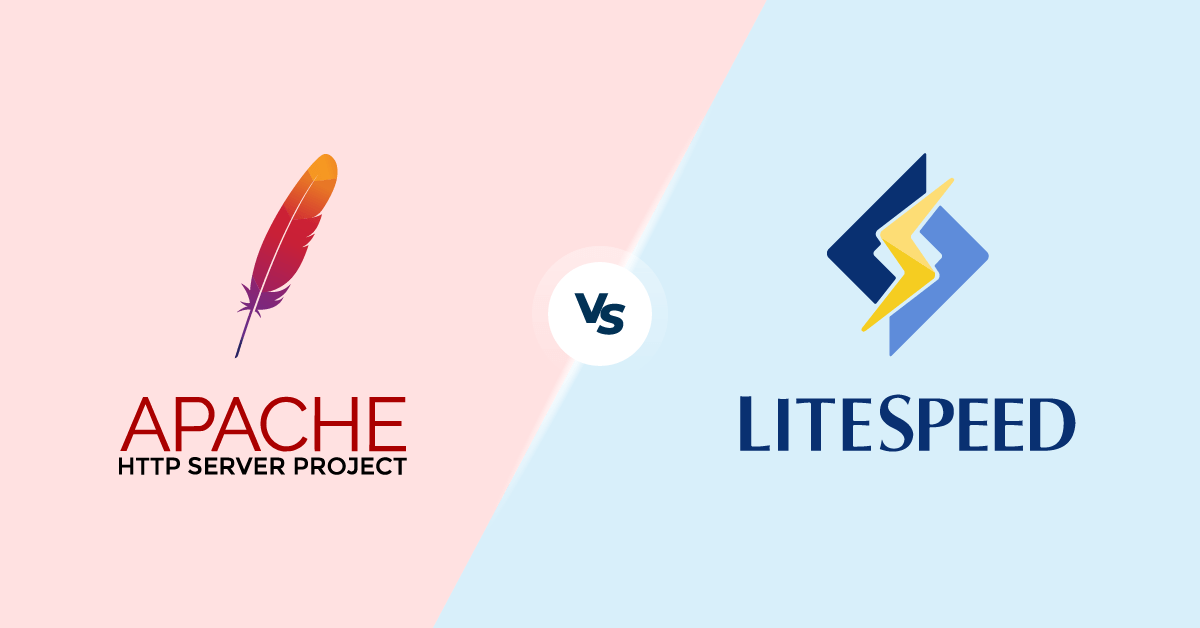Choosing the right web server is a crucial decision for optimizing the performance of a WordPress website. LiteSpeed and Apache have emerged as prominent options, each with its unique strengths and considerations.
For website owners and developers seeking the ideal server environment, it’s essential to understand the features, performance, and compatibility of LiteSpeed and Apache.
This exploration delves into the intricacies of these two servers, offering valuable insights to help you make an informed choice for hosting your WordPress site. Whether you prioritize speed, scalability, or versatility, this comprehensive guide provides clarity on the factors that can influence your decision between LiteSpeed and Apache.
Table of Contents
LiteSpeed

LiteSpeed is a high-performance, commercial web server software designed to deliver exceptional speed and efficiency for serving web content. It is a drop-in replacement for the more commonly used Apache web server but is known for outperforming Apache in terms of speed and resource utilization.
Key Features of LiteSpeed
- Performance:
One of the standout features of LiteSpeed is its superior performance. It is known for its ability to handle a large number of concurrent connections and deliver web content faster than traditional web servers. LiteSpeed achieves this through its event-driven architecture, which allows it to handle multiple connections simultaneously with minimal resource usage.
- Compatibility with Apache:
LiteSpeed is fully compatible with Apache, which means it can directly replace Apache in existing server environments without requiring any changes to configurations or web applications. This compatibility makes it a seamless choice for those looking to upgrade their server infrastructure without undergoing significant modifications.
- LiteSpeed Cache:
LiteSpeed includes built-in caching mechanisms, such as LiteSpeed Cache, which is specifically designed to enhance the performance of dynamic web applications like WordPress. LiteSpeed Cache is an advanced caching system that can significantly improve the speed and responsiveness of websites by storing static copies of dynamically generated pages.
- Security:
LiteSpeed incorporates various security features to protect websites from common web threats. It supports features like ModSecurity integration, IP-based access controls, and anti-DDoS mechanisms. The web server is designed to handle security concerns efficiently while maintaining high performance.
- HTTP/2 and QUIC Support:
LiteSpeed supports modern web protocols such as HTTP/2 and QUIC. These protocols enhance the loading speed of websites by allowing multiple requests and responses to be multiplexed over a single connection. This results in faster page loading times, improved user experience, and better optimization for mobile devices.
- Easy Configuration and Management:
LiteSpeed provides a web-based user interface called LiteSpeed WebAdmin Console, which offers a user-friendly way to configure and manage the server. This makes it accessible to users with varying levels of technical expertise.
- Scalability:
LiteSpeed is designed to scale efficiently, making it suitable for websites with varying levels of traffic. Its architecture allows it to handle increased loads without a significant impact on performance.
- Support for Multiple Languages:
LiteSpeed supports various programming languages, including PHP, Python, Ruby, and others, making it versatile for hosting different types of web applications.
- Built-in SSL/TLS Support:
LiteSpeed comes with built-in support for SSL/TLS encryption, ensuring secure communication between clients and the web server. This is crucial for protecting sensitive data transmitted over the web.
Pros:
- Exceptional Performance:
LiteSpeed is renowned for its high performance, delivering faster response times and improved overall speed compared to traditional web servers like Apache.
- Resource Efficiency:
The event-driven architecture of LiteSpeed allows it to handle a large number of concurrent connections efficiently, minimizing server resource usage and optimizing performance.
- Compatibility with Apache:
LiteSpeed serves as a seamless drop-in replacement for Apache, making it easy for users to transition without significant configuration changes. This compatibility ensures a smooth migration process.
- LiteSpeed Cache:
The built-in LiteSpeed Cache is a powerful feature for dynamic web applications, such as WordPress, significantly boosting website speed by intelligently caching dynamic content.
- Security Features:
LiteSpeed incorporates security measures like ModSecurity integration, IP-based access controls, and anti-DDoS mechanisms, providing a robust defense against common web threats.
- Support for Modern Protocols:
LiteSpeed supports protocols like HTTP/2 and QUIC, contributing to faster page loading times and improved user experience, especially beneficial for mobile users.
- User-Friendly WebAdmin Console:
The LiteSpeed WebAdmin Console offers a user-friendly interface for server configuration and management, making it accessible for users with varying technical expertise.
- Scalability:
LiteSpeed is designed to scale efficiently, accommodating increased traffic loads without compromising performance. This scalability is crucial for websites experiencing varying levels of demand.
- Multi-Language Support:
LiteSpeed supports various programming languages, including PHP, Python, Ruby, and more, making it versatile for hosting a wide range of web applications.
- Built-in SSL/TLS Support:
LiteSpeed comes with built-in support for SSL/TLS encryption, ensuring secure communication between clients and the web server.
Cons:
- Commercial License:
LiteSpeed is a commercial product, and while it offers a free version with limited features, the full range of capabilities may require a paid license. This can be a consideration for budget-conscious users.
- Limited Community Support:
Compared to widely adopted servers like Apache, LiteSpeed has a smaller user community. This may result in fewer online resources and community-driven support options.
- Dependency on LiteSpeed-Specific Features:
Some advanced features, particularly related to caching and optimization, may be specific to LiteSpeed, potentially creating dependencies that could be a consideration for future migrations.
- Learning Curve for New Users:
While LiteSpeed aims to be user-friendly, users accustomed to other web servers might face a learning curve when transitioning to LiteSpeed.
- Customization Challenges:
In certain scenarios, the high level of optimization in LiteSpeed may limit the extent to which users can customize or tweak configurations according to specific needs.
Apache

Apache, often referred to as Apache HTTP Server, is an open-source web server software developed and maintained by the Apache Software Foundation. It is one of the most widely used web servers globally and plays a crucial role in hosting and serving web content on the internet.
You can more read about Apache vs Nginx
Key Features of Apache
- Open Source:
Apache is distributed under an open-source license, which means its source code is freely available to the public. This openness encourages collaboration and allows developers to modify and customize the software according to their needs.
- Cross-Platform:
Apache is designed to be compatible with various operating systems, including Unix-based systems (Linux, BSD, and others), Windows, and macOS. This cross-platform compatibility contributes to its widespread adoption.
- Modular Architecture:
Apache’s modular architecture allows it to be extended and customized through the use of modules. These modules can add functionality such as additional protocols, authentication mechanisms, and content handling.
- HTTP Server:
Apache primarily functions as a web server, serving HTML files, images, scripts, and other web content to clients (typically web browsers) that request them. It supports the Hypertext Transfer Protocol (HTTP) and the secure version, HTTPS, which uses SSL/TLS encryption.
- Compatibility:
Apache is highly compatible with a wide range of web technologies and programming languages, including PHP, Python, Perl, and more. This flexibility makes it suitable for hosting diverse web applications.
- Configuration through Text Files:
Apache’s configuration is typically done through text files, such as the “httpd.conf” file. This allows administrators to define settings and customize the server’s behavior by editing these configuration files.
- Virtual Hosting:
Apache supports virtual hosting, allowing a single server to host multiple websites with different domain names. This is beneficial for shared hosting environments.
- Security Features:
Apache includes features and modules to enhance security, such as access controls, authentication mechanisms, and support for SSL/TLS encryption.
- Community Support:
Apache has a large and active community of users and developers. This community support provides a wealth of documentation, forums, and resources for troubleshooting and optimization.
- Long-Term Stability:
Apache has a reputation for stability and reliability, making it a preferred choice for many organizations and hosting providers.
Pros:
- Open Source:
Apache is open-source software, meaning its source code is freely available for modification and distribution. This fosters a collaborative development environment and allows users to tailor the server to their specific needs.
- Cross-Platform Compatibility:
Apache is designed to work on various operating systems, including Unix-based systems (Linux, BSD) as well as Windows and macOS. This cross-platform compatibility makes it versatile and widely applicable.
- Modular Architecture:
Apache’s modular design allows administrators to extend and enhance its functionality through modules. This modularity makes it flexible and adaptable to different requirements.
- Wide Adoption:
Apache is one of the most widely used web servers globally. Its extensive adoption is a testament to its reliability and suitability for various hosting scenarios.
- Virtual Hosting:
Apache supports virtual hosting, enabling a single server to host multiple websites with different domain names. This is particularly useful for shared hosting environments.
- Support for Multiple Protocols:
In addition to HTTP, Apache supports other protocols like FTP and HTTP/2, providing flexibility for different types of web applications.
- Extensive Documentation:
The Apache community provides comprehensive documentation, tutorials, and forums, offering valuable resources for users and administrators. This wealth of information contributes to the ease of use and troubleshooting.
- Security Features:
Apache includes features for securing web servers, such as access controls, authentication mechanisms, and support for SSL/TLS encryption.
- Robust Logging and Monitoring:
Apache provides detailed logging capabilities, allowing administrators to monitor server activity and troubleshoot issues effectively.
- Community Support:
Apache has a large and active community of users and developers. This community support ensures ongoing development, bug fixes, and the availability of third-party modules.
Cons:
- Resource Consumption:
Apache can be perceived as resource-intensive compared to some other lightweight web servers, especially under heavy loads. Fine-tuning configurations may be necessary to optimize resource usage.
- Configuration Complexity:
The configuration files for Apache can be extensive and may seem complex for beginners. Administrators need to understand the syntax and structure of these files for effective server management.
- Slower Performance for Dynamic Content:
In certain scenarios, Apache’s performance for serving dynamic content, especially with high concurrency, may be slower compared to more specialized web servers like LiteSpeed or Nginx.
- Prefork MPM Overhead:
The traditional Prefork Multi-Processing Module (MPM) in Apache can be less efficient than other MPMs, especially in terms of memory usage. Using alternative MPMs like Worker or Event may be necessary for better performance.
- Limited Support for Asynchronous Request Handling:
While Apache can handle a large number of concurrent connections, its event-handling model may not be as optimized for asynchronous request handling as some other web servers.
- Slower Release Cycle:
The release cycle of new Apache versions may be perceived as slower compared to some other web servers. This may impact the availability of the latest features and enhancements.
- Learning Curve for New Users:
The extensive configuration options and features of Apache can result in a steeper learning curve for new users, particularly those who are new to web server administration.
Comparison Between Apache and LiteSpeed
| Feature | Apache | LiteSpeed |
|---|---|---|
| Performance | Generally reliable; may be less performant compared to specialized servers. | Renowned for exceptional speed and resource utilization |
| Compatibility | Widely adopted, compatible with various OS and scripting languages. | Can serve as a drop-in replacement for Apache; supports PHP, Python. |
| Ease of Configuration | Configuration through text files; may be overwhelming for beginners. | WebAdmin Console provides a user-friendly web-based interface for configuration. |
| Security | Robust security features, including access controls, authentication, and SSL/TLS. | Incorporates security measures like ModSecurity and anti-DDoS mechanisms. |
| Community and Support | Large and active community; extensive documentation and community-driven support. | Larger community; official support channels provided by LiteSpeed Technologies. |
| Licensing | Open-source under the Apache License; free to use, modify, and distribute. | Commercial product with a free version; full capabilities may require a paid license. |
| Virtual Hosting | Supports virtual hosting for multiple websites with different domain names. | Also supports virtual hosting for multiple websites. |
Conclusion:
The choice between Apache and LiteSpeed depends on specific needs, priorities, and the nature of the hosting environment.
Apache is a solid, open-source choice with a large community, while LiteSpeed is recognized for its exceptional performance and user-friendly interface. Consider factors like performance requirements, ease of configuration, and specific features needed for your web applications or ecommerce websites when making a decision.

6 Best WordPress AI Website Builder Platforms 2024
[…] impact performance. Since Google considers website speed one of the ranking factors, optimizing the website’s speed is […]